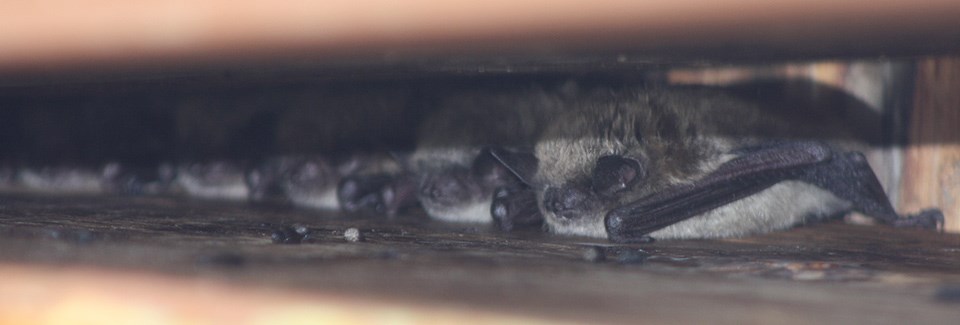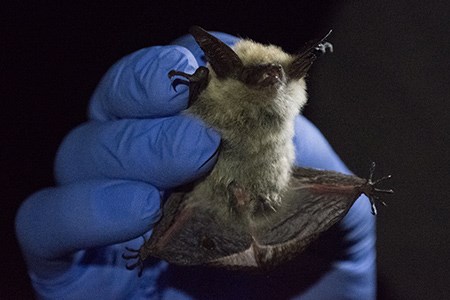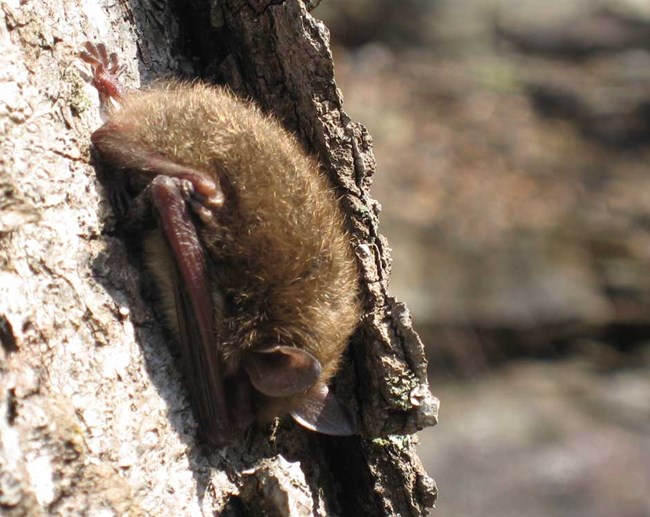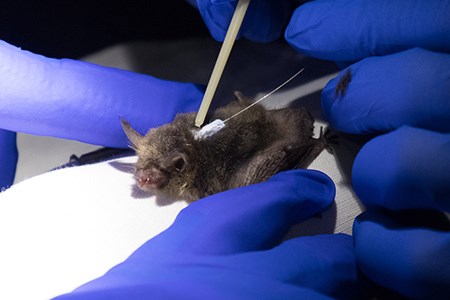
NPS photo Eleven different species of bats have been identified at Devils Tower National Monument. Although some roost on the Tower itself, biologists now know that bats within the park frequent our boulder field and forests at the base, as much or more than the actual formation. The following bats have been identified within the park: Bats
White-Nose Syndrome (WNS)Bats across North America are suffering from a disease known as White-Nose Syndrome. WNS is a fungal disease that affects bats during hibernation, causing them to wake up early or more frequently, using the stored energy that helps them survive the winter. The National Park Service (NPS) researches WNS, and you can also find more information from private organizations.Although WNS does not affect humans directly, our relationship with bats means the disease has serious indirect effects for people. In North America, most bats are insectivorous, meaning they prey on insects. Some bats eat their weight in insects every night. Favorite foods include beetles, moths, crickets and many other crop-destroying pests. Due to their pest control and crop protection, estimates put the value of bats in the billions of dollars. One of the bat species found at Devils Tower National Monument, the northern long-eared bat, has experienced severe impacts from WNS. It is currently listed as a federally threatened species. Park biologists are studying these creatures and their habitat as part of the greater battle against WNS and bat species decline across our continent. 
NPS photo / Dan Wells Fringed Myotis (Myotis thysanodes)

NPS photo / Mark Graham Little brown bat (Myotis lucifugus)

NPS photo / Dan Wells Northern long-eared bat (Myotis septentrionalis)
|
Last updated: September 27, 2025
